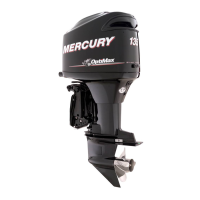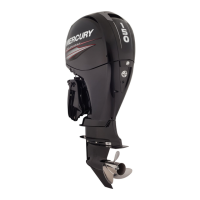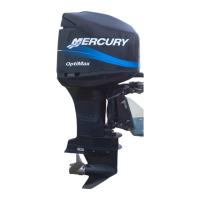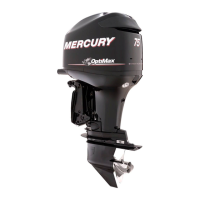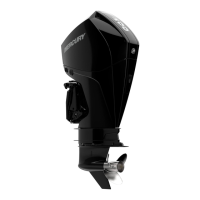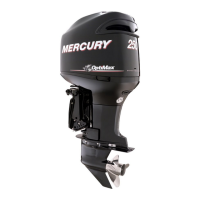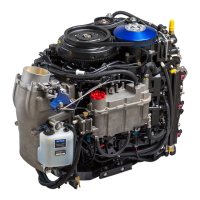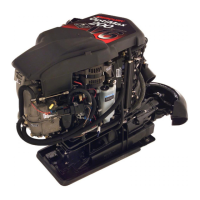DIRECT FUEL INJECTION
90-855347R1 JANUARY 1999 Page 3B-37
Fuel Pressure Regulator
Regulator Closed Regulator Open
1
2
3
4
5
6
7
8
9
10
11
12
13
1
2
3
4
5
6
7
8
9
10
11
1
2
3
4
5
6
7
8
9
10
11
12
13
1
2
3
4
5
6
7
8
9
10
11
12
13
1-Top Cover
2-Expansion Plug
3-O-ring
4-Spring Retainer
5-Spring
6-O-ring
7-Diaphragm Seat
8-Air Rail
9-Air Passage (from Air Compressor)
10 - Fuel Return Passage (to Vapor Separator)
11 - Fuel Inlet Passage (from Electric Fuel Pump)
12 - Diaphragm Assembly
13 - Calibration Screw (Do Not Turn)
The fuel pump is capable of delivering more fuel than the engine can consume. Excess
fuel flows through the fuel pressure regulator, interconnecting passages/hoses, fuel cool-
er, and back to the vapor separator tank. This constant flow of fuel means that the fuel
system is always supplied with cool fuel, thereby preventing the formation of fuel vapor
bubbles and minimizing the chances of vapor lock.
The fuel pressure regulator is calibrated to raise the fuel pressure to 10 psi above the air
pressure.
The fuel regulator is mounted on the port fuel rail, near the top. This regulator relies on
both air and spring pressure to control the fuel pressure. Inside the regulator assembly
is a 10 lb. spring, this spring holds the diaphragm against the diaphragm seat. The contact
between the diaphragm and diaphragm seat closes the passage between the incoming
fuel (from the electric fuel pump) and the fuel return passage.
When the engine is not running (no air pressure on the spring side of the diaphragm) the
fuel pressure required to move the diaphragm is 10 psi.
When the engine is running, air pressure from the air compressor (80 psi) is routed
through the air passages, to the spring side of the fuel pressure regulator diaphragm.
The air pressure (80 psi) and spring pressure (10 psi) combine to regulate system fuel
pressure to 90 psi - or 10 psi higher than the air pressure in the DFI system fuel/air rails.

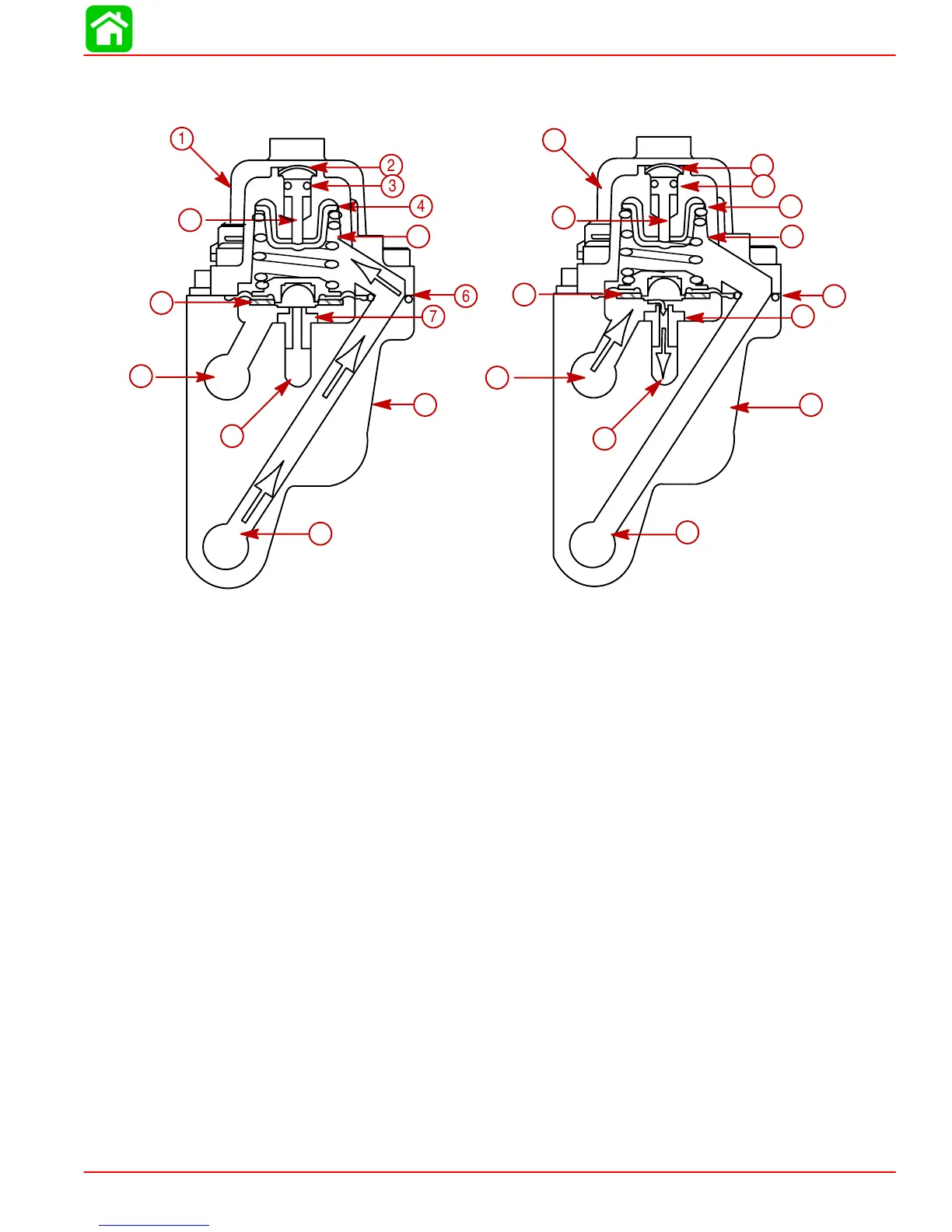